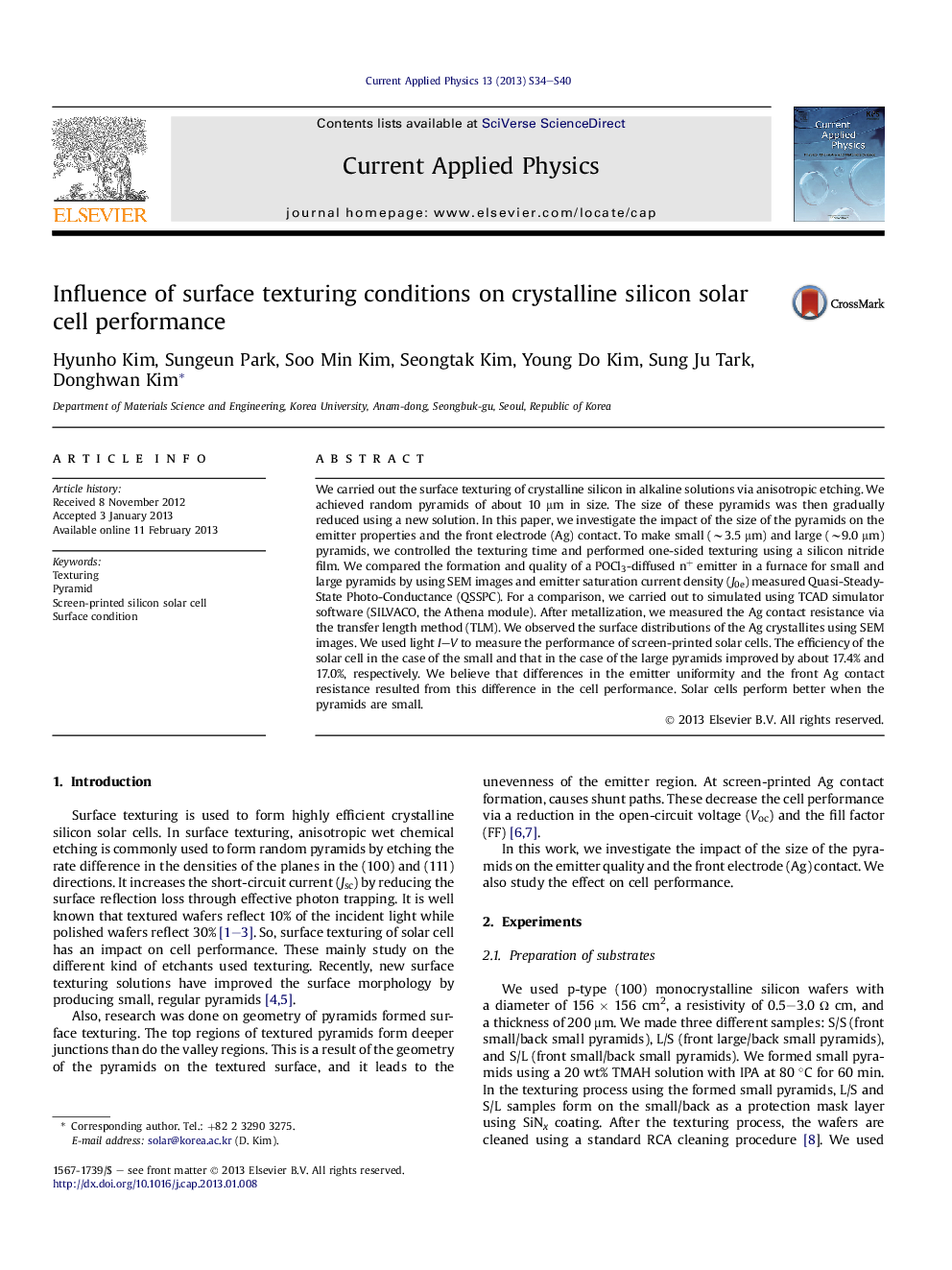| Article ID | Journal | Published Year | Pages | File Type |
|---|---|---|---|---|
| 1786619 | Current Applied Physics | 2013 | 7 Pages |
We carried out the surface texturing of crystalline silicon in alkaline solutions via anisotropic etching. We achieved random pyramids of about 10 μm in size. The size of these pyramids was then gradually reduced using a new solution. In this paper, we investigate the impact of the size of the pyramids on the emitter properties and the front electrode (Ag) contact. To make small (∼3.5 μm) and large (∼9.0 μm) pyramids, we controlled the texturing time and performed one-sided texturing using a silicon nitride film. We compared the formation and quality of a POCl3-diffused n+ emitter in a furnace for small and large pyramids by using SEM images and emitter saturation current density (J0e) measured Quasi-Steady-State Photo-Conductance (QSSPC). For a comparison, we carried out to simulated using TCAD simulator software (SILVACO, the Athena module). After metallization, we measured the Ag contact resistance via the transfer length method (TLM). We observed the surface distributions of the Ag crystallites using SEM images. We used light I–V to measure the performance of screen-printed solar cells. The efficiency of the solar cell in the case of the small and that in the case of the large pyramids improved by about 17.4% and 17.0%, respectively. We believe that differences in the emitter uniformity and the front Ag contact resistance resulted from this difference in the cell performance. Solar cells perform better when the pyramids are small.
► We studied in respect of effect of pyramids size on textured surface by cell performance. ► The reflectance is slightly lower for small pyramids, after the passivation deposit the values are similar. ► The quality of the emitter for small pyramids is excellent because of its uniformity. ► Performances of small and large pyramids cell showed 17.4% and 17.0%. ► Property of solar cell perform better when the pyramids are small.
